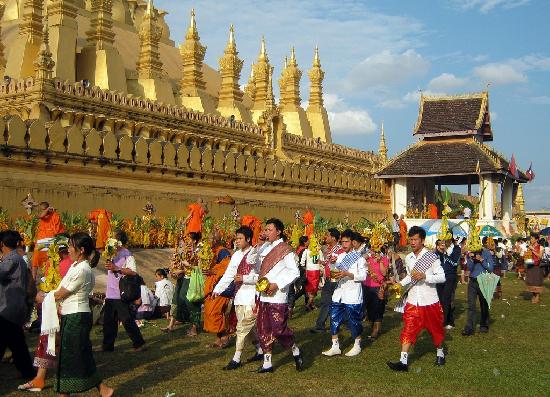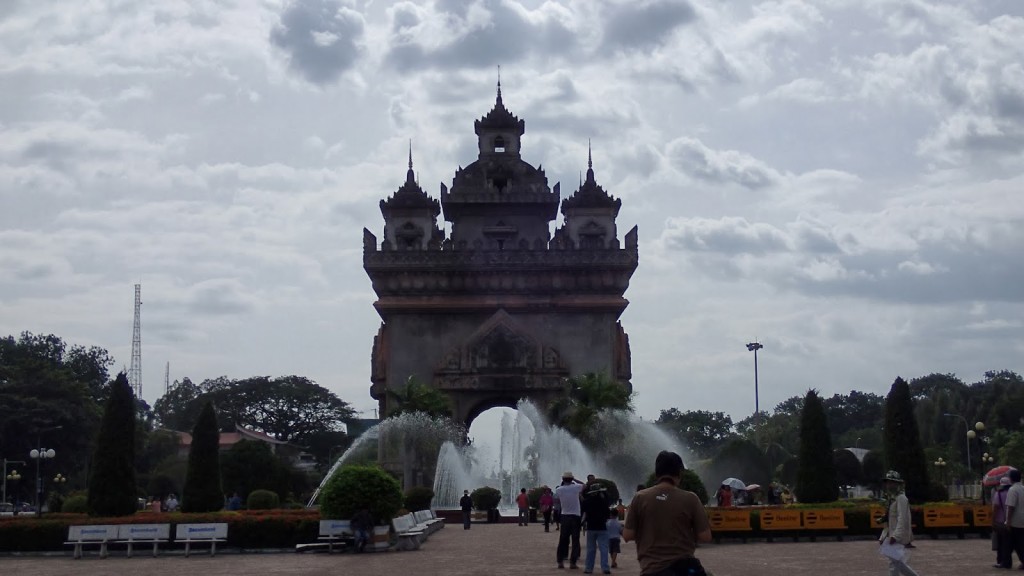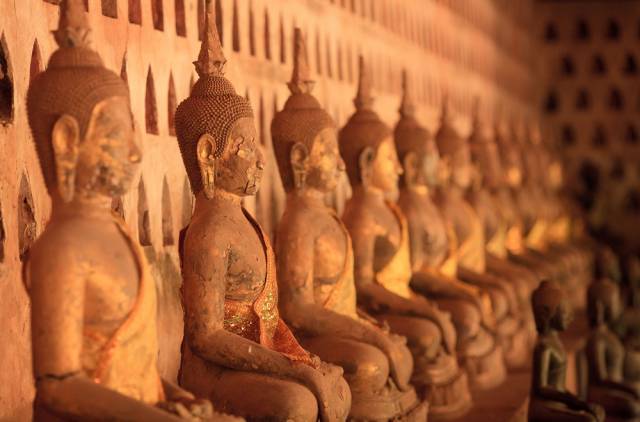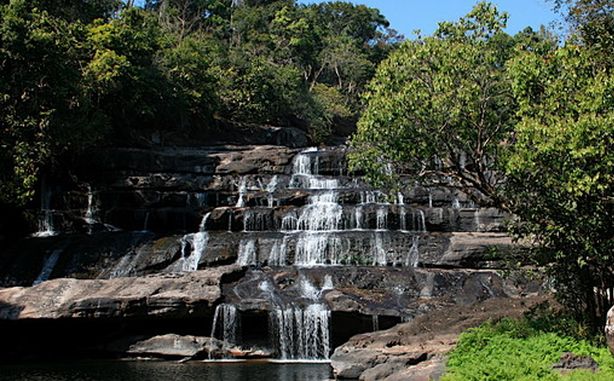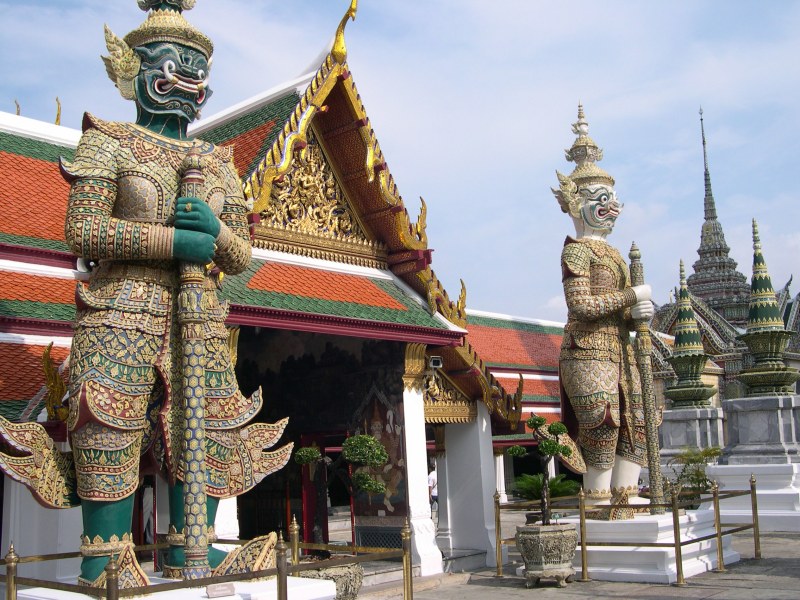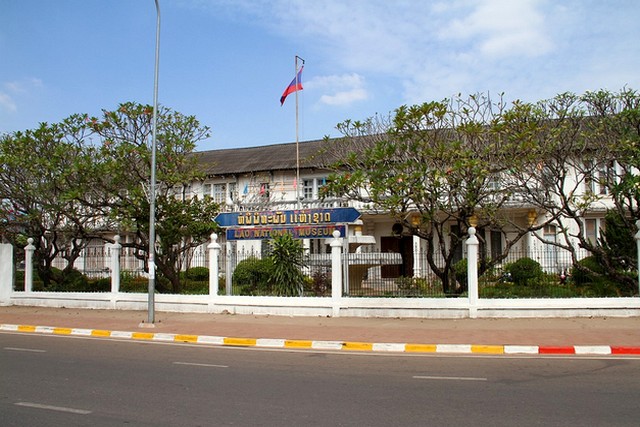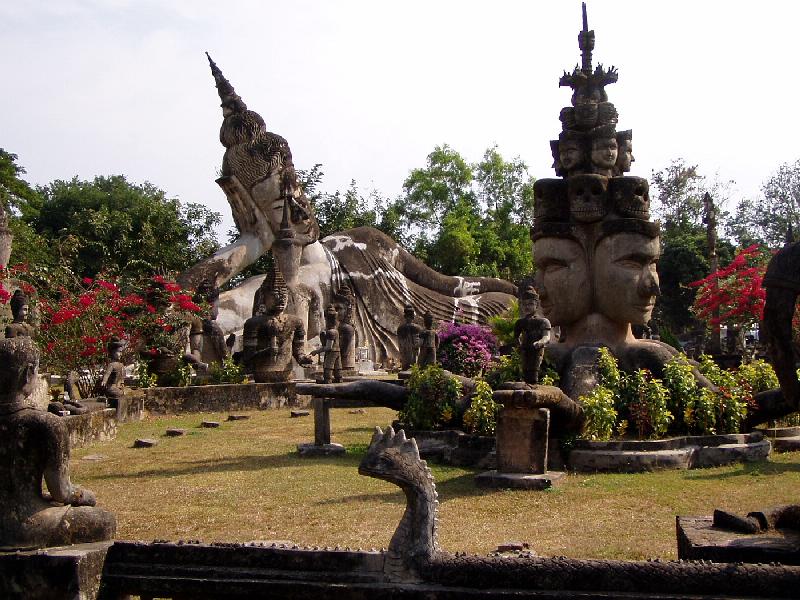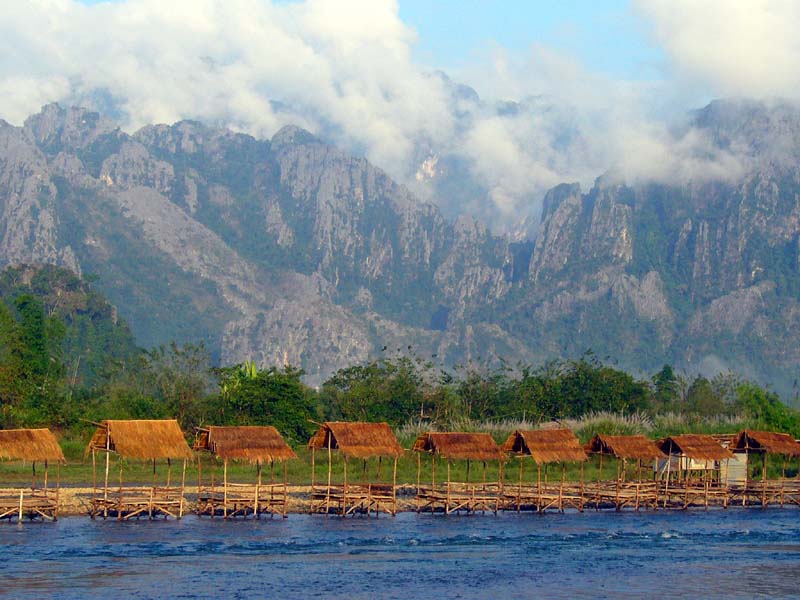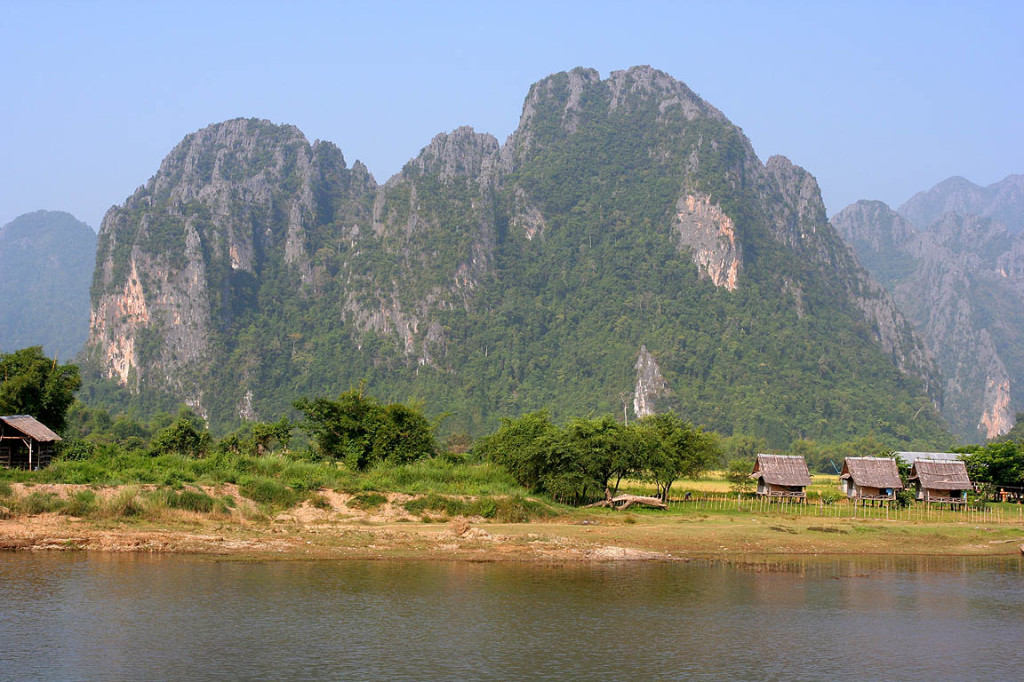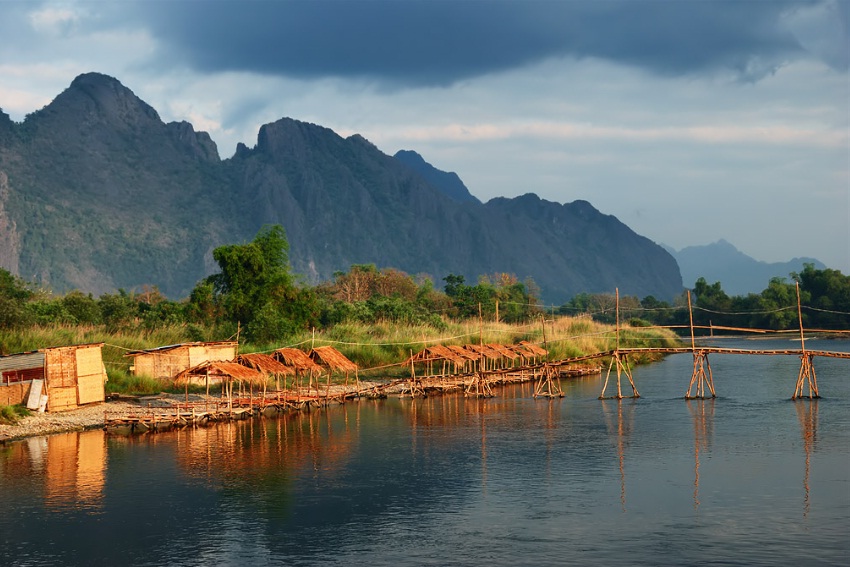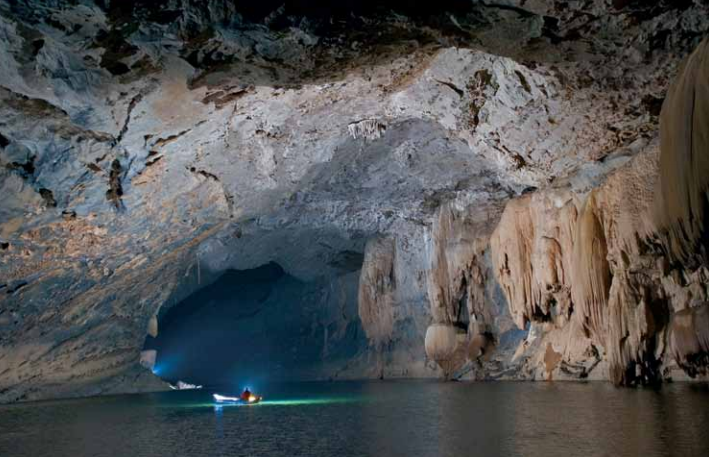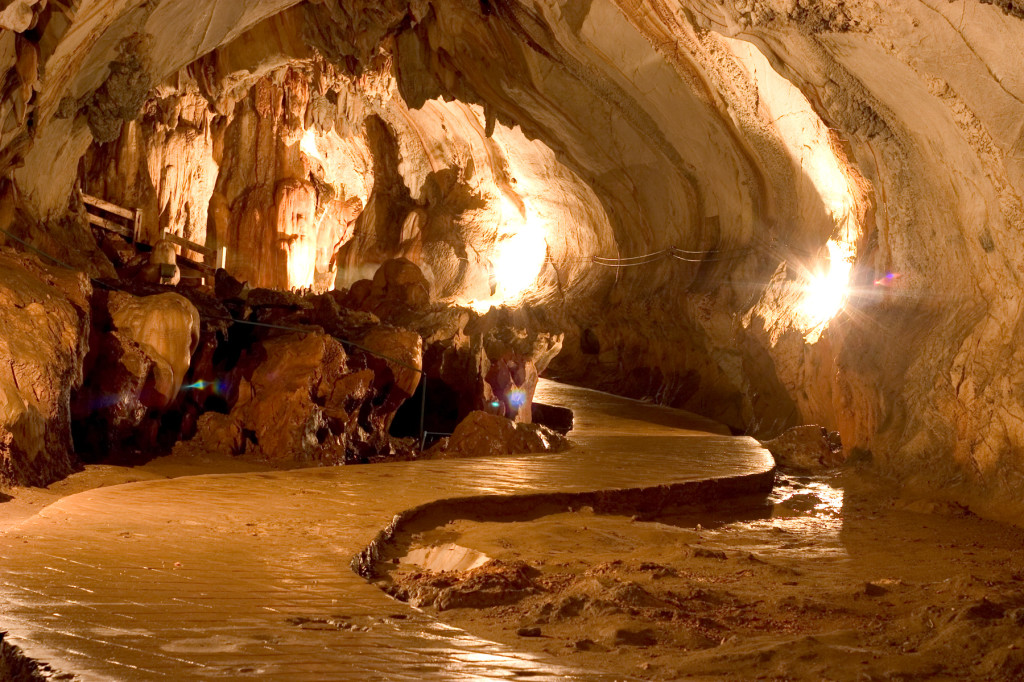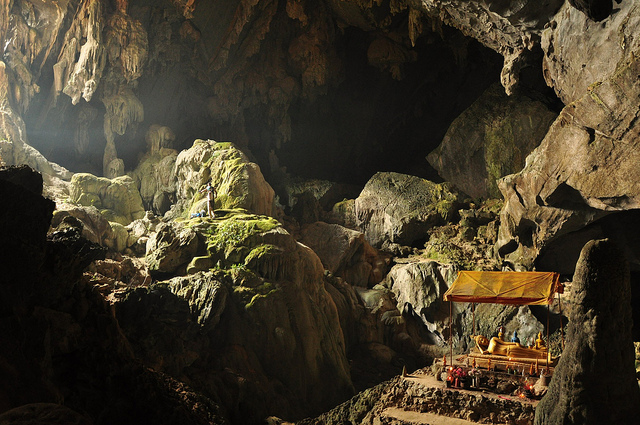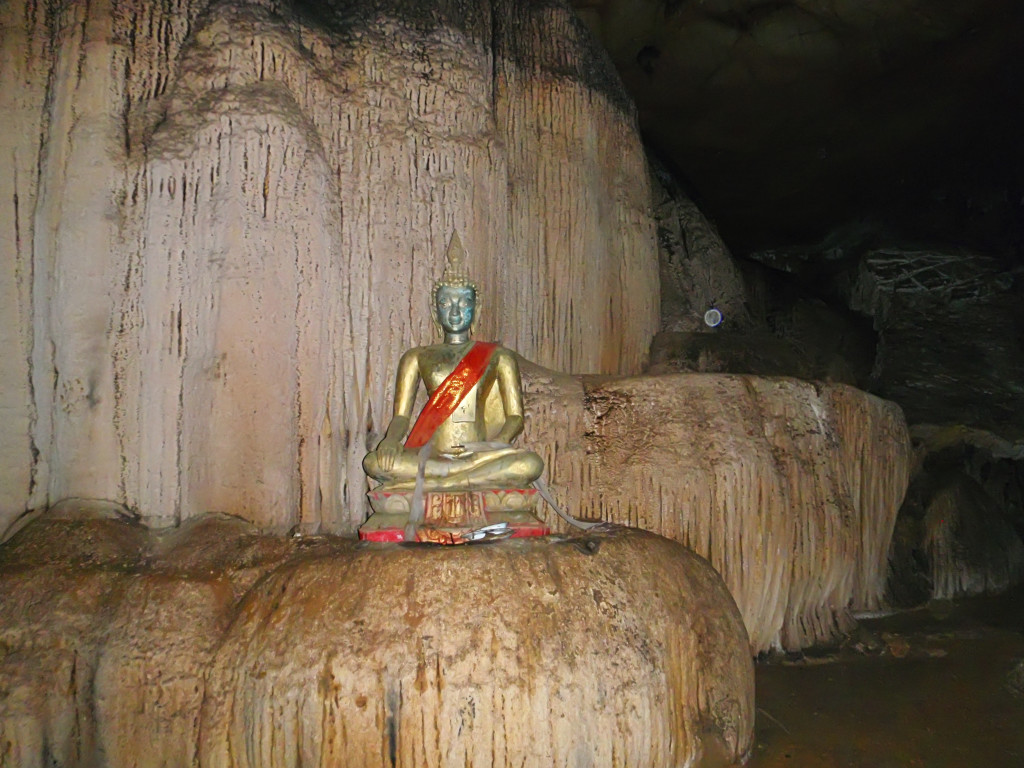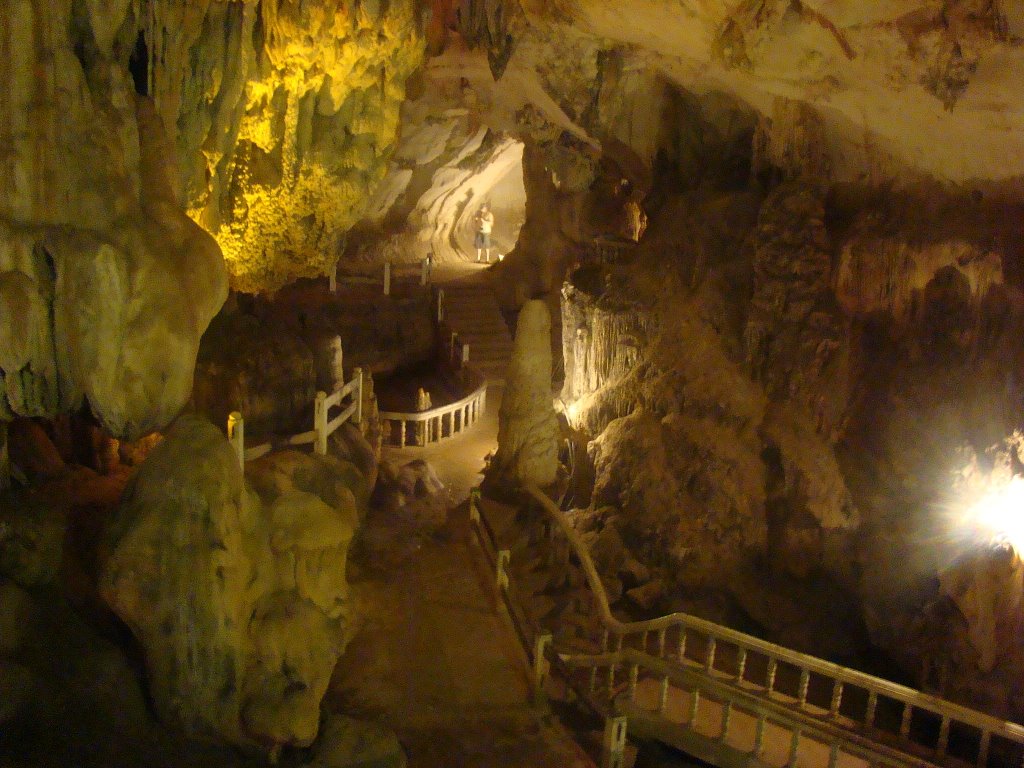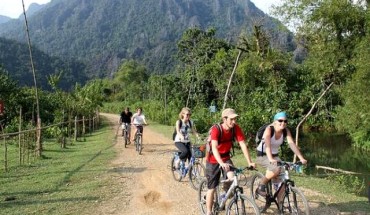Most of the interesting buildings in Vientiane are of religious significance. All tour companies and many hotels and guesthouses will arrange city tours and excursions to surrounding sights but it is just as easy to arrange a tour independently with a local tuk-tuk driver; the best English speakers (and thus the most expensive tuk-tuks) can be found in the parking lot beside Nam Phou. Those at the Morning Market (Talaat Sao) are cheaper.
Most tuk-tuk drivers pretend not to carry small change, so make sure you have the exact fare with you before taking a ride.
That Luang
That Luang Rd, 3.5 km northeast of the city centre. A booklet about the wat is on sale at the entrance. That Luang is Vientiane’s most important site and the holiest Buddhist monument in the country. The golden spire looks impressive at the top of the hill, overlooking the city.
According to legend, a stupa was first built here in the third century AD by emissaries of the Moghul Emperor Asoka. Excavations on the site, however, have only located the remains of an 11th- to 13th-century Khmer temple, making the earlier provenance doubtful in the extreme. The present monument, encompassing the previous buildings, was built in 1566 by King Setthathirat, whose statue stands outside. Plundered by the Thais and the Chinese Haw in the 18th century, it was restored by King (Chao) Anou at the beginning of the 19th century.
The reliquary is surrounded by a square cloister, with an entrance on each side, the most famous on the east. There is a small collection of statues in the cloisters, including one of the Khmer king Jayavarman VII. The cloisters are used as lodgings by monks who travel to Vientiane for religious reasons and especially for the annual That Luang. The base of the stupa is a mixture of styles, Khmer, Indian and Lao – and each side has a hooray or small offering temple. This lowest level represents the material world, while the second tier is surrounded by a lotus wall and 30 smaller stupas, representing the 30 Buddhist perfections. Each of these originally contained smaller golden stupas but they were stolen by Chinese raiders in the 19th century. The 30-m-high spire dominates the skyline and resembles an elongated lotus bud, crowned by a stylized banana flower and parasol. It was designed so that pilgrims could climb up to the stupa via the walkways around each level. It is believed that originally over 450 kg of gold leaf was used on the spire.
Patuxai (Victory Monument) Junction of That Luang Rd and Lane Xang Av. At the end of That Luang is the Oriental answer to Paris’s Arc de Triomphe and Vientiane’s best-known landmark, the Victory Monument or Patuxai. It was built by the former regime in memory of those who died in the wars before the Communist takeover, but the cement ran out before its completion. Refusing to be beaten, the regime diverted hundreds of tons of cement, part of a US aid package to help with the construction of runways at Wattay Airport, to finish off the monument in 1969.
Wat Sisaket Junction of Lane Xang Av and Setthathirat Road. No photographs in the sim. Further down Lane Xang is the Morning Market or Talaat Sao and beyond, is one of Vientiane’s two national museums, Wat Sisaket. Home of the head of the Buddhist community in Laos, Phra Sangka Nagnok, it is one of the most important buildings in the capital and houses over 7000 Buddha images. Wat Sisaket was built in 1818 during the reign of King Anou. A traditional Lao monastery, it was the only temple that survived the Thai sacking of the town in 1827-1828, making it the oldest building in Vientiane.
The main sanctuary, or sim, with its sweeping roof, shares many stylistic similarities with Wat Phra Kaeo: window surrounds, lotus-shaped pillars and carvings of deities held up by giants on the rear door. The sim contains 2052 Buddha statues (mainly terracotta, bronze and wood) in small niches in the top half of the wall. There is little left of the Thai-style jataka murals on the lower walls but the depth and color of the originals can be seen from the few remaining pieces.
The cloisters were built during the 1800s and were the first of their kind in Vientiane. They shelter 120 large Buddhas in the attitude of subduing Mara, plus a number of other images in assorted madras, and thousands of small figures in niches, although many of the most interesting Buddha figures are now in Wat Phra Kaeo.
The whole ensemble is washed in a rather attractive shade of caramel and, combined with the terracotta floor tiles and weathered roof, is a most satisfying sight. Come before 0830 for the chance to have it all to yourself.
Phou Khao Khouay National Protected Area
Phou Khao Khouay National Protected luck, offer the opportunity to hear or Area (pronounced poo cow kway) is one Laos’ premier national protected areas.The area extends across 2000 sq km and incorporates an attractive sandstone mountain range. It is crossed by three large rivers, smaller tributaries and two waterfalls at Tad Leuk and Tad Sae, which weave their way in to the Ang Nam Leuk reservoir, a stunning man-made dam and lake that on the outskirts of the park. Within the protected area is an array of wildlife, including wild elephants, gibbons, tigers, clouded leopards and Asiatic black bears.
Around the village of Ban Na the village’s sugar cane plantations and salt deposits attract a herd of wild elephants (around 30), which have, in the past, destroyed the villagers’ homes and even killed a resident. This has limited the villagers’ ability to undertake normal tasks, such as collecting bamboo, fearing that they may come across the wild elephants. To help compensate, the village, in conjunction with some NGOs, has constructed an elephant observation tower and has started running trekking tours to see these massive creatures in their natural habitat. The elephant tower, 4 km from Ban Na, is the primary attraction and it is possible to spend the night here to try and catch a glimpse of the giant pachyderms that come to lap up salt from the nearby salt lick in the early evening. One- to three-day treks through the national park cross waterfalls, pass through pristine jungle and, with spot the odd wild elephant, though it is too dangerous to get close. This is an important ecotour that contributes to the livelihood of the Ban Na villagers and helps conserve the elephant population. Advance notice is required so it’s advisable to book with a tour operator in Vientiane.
If you are travelling independently you will need to organize permits, trekking and accommodation with the village directly. To do this, contact Mr Bounthanam, T020-220 8286 – ask a Lao speaker to help you. Visit www.trekkingcentrallaos.com and contact the National Tourism Authority in Vientiane or Green Discovery Laos. Visitors will need to bring drinking water and snacks.
Ban Hat Khai is home to 90 families from the Lao Loum and Lao Soung ethnic groups. Home stays are offered here and it is also a starting point for organized treks through mountain landscapes, crossing the Nam Mang River and the Phay Xay cliffs. Most treks take in the Tad Sae Falls.
The park is northeast of Vientiane along Route 13 South. To get to Ban Na you need to stop at Tha Pabat Phonsanh, 80 km northeast of Vientiane; the village is a further 2 km. For Ban Hat Khai, 100 km northeast of Vientiane, continue on Route 13 to Thabok, where a songthaew or boat can take you 7-8 km to the village. Buses to Paksan from Vientiane’s Talaat Sao bus station and That Luang market stop at Thabok.
Wat Phra Kaeo Setthathirat Rd, closed public holidays. No photographs in the sim. Almost opposite Wat Sisaket is Wat Phra Kaeo. It was originally built by King Setthathirat in 1565 to house the Emerald Buddha (Phra Kaeo), now in Bangkok, which he had brought from his royal residence in Chiang Mai. It was never a monastery but was kept instead for royal worship. The Emerald Buddha was removed by the Thais in 1779 and Wat Phra Kaeo was destroyed by them in the 1827 sacking of Vientiane. (The Thais now claim the Emerald Buddha as their most important icon in the country.) The whole building was in a bad state of repair after the sackings, the only thing remaining fully intact was the floor. The building was expertly reconstructed in the 1940s and 1950s and is now surrounded by a garden. During renovations, the interior walls of the wat were restored using a plaster made of sugar, sand, buffalo skin and tree oil.
The sim stands on three tiers of galleries, the top one surrounded by majestic, lotus-shaped columns. The tigers are joined by several flights of steps and guarded by nagas. The main, central (southern) door is an exquisite example of Lao wood sculpture with carved angels surrounded by flowers and birds; it is the only notable remnant of the original wat. (The central door at the northern end, with the larger carved angels supported by ogres, is new.) The sim now houses a superb assortment of Lao and Khmer art and some pieces of Burmese and Khmer influence, mostly collected from other wats in Vientiane alongside the odd piece from further afield. There is scant information in either Lao or English. The main altar is an assault in the senses, crammed full of Buddha statues and garish offerings. Although people regularly come and pray here, the wat’s main purpose is as a quasi-museum.
Lao National Museum
Samsenthai Rd, opposite the Cultural Centre Hall. No photography allowed. Formerly called the Revolutionary Museum, in these post-revolutionary days it has been redesignated the National Museum. The museum’s collection has grown over the last few years and now includes a selection of historical artifacts from dinosaur bones and pre-Angkorian sculptures to a comprehensive photographic collection on Laos’ modern history. The rhetoric of these modern collections has been toned down from the old days, when photographic descriptions would refer to the ‘running dog imperialists’ (Americans). The museum features a dazzling array of personal effects from the revolutionary leader Kaysone, including his exercise machine and a spoon he once used. Downstairs there are ancient artifacts, including stone tools and poignant burial jars. Upstairs the museum features a range of artifacts and busts, as well as a small exhibition on various ethnic minorities. The final section of the museum comprises mostly photographs which trace, chronologically, the country’s struggle against the ‘brutal’ French colonialists and American ‘imperialists’.
Xieng Khuan (25 km south of Vientiane, Food vendors sell drinks and snacks. Otherwise known as the Garden of the Buddhas or Buddha Park, Xieng Khuan is close to the border with Thailand. It has been described as a Laotian Tiger Balm Gardens, with reinforced concrete Buddhist and Hindu sculptures of Vishnu, Buddha, Siva and various other assorted deities and near-deities. There’s also a bulbous-style building with three levels containing smaller sculptures of the same gods.
The garden was built in the late 1950s by a priest/monk/guru/sage/artist called Luang Pu Bunleua Sulihat, who studied under a Hindu reship in Vietnam and then combined the Buddhist and Hindu philosophies in his own very peculiar view of the world. He left Laos because his anti-communist views were incompatible with the ideology of the Pathet Lao (or perhaps because he was just too weird) and settled across the Mekong near the Thai town of Nong Khai, where he proceeded to build an equally revolting and bizarre concrete theme park for religious schizophrenics, called Wat Khaek. With Luang Pu’s forced departure from Laos his religious garden came under state control and it is now a public park.
To get there take the No 14 bus from the Talaat Sao bus station, a tuk-tuk, hire a private vehicle, or take a motorbike or bicycle because the road follows the river and is reasonably level the whole way.
Vang Vieng
The drive from Vientiane to Vang Vieng, on the much-improved Route 13, follows the valley of the Nam Ngum north and then climbs steeply onto the plateau where Vang Vieng is located, 160 km north of Vientiane. The surrounding area is inhabited by the Hmong and Yao hill peoples and is particularly picturesque: craggy karst limestone scenery, riddled with caves, crystal-clear pools and waterfalls. In the early morning the views are reminiscent of a Chinese Sung Dynasty painting.
The town itself is nestled in a valley on the bank of the Nam Song River, amid a misty jungle. It enjoys cooler weather and offers breathtaking views of the imposing mountains of Pha Tang and Phatto Nokham.
The town’s laid-back feel has made it a popular haunt for the backpacker crowd, while the surrounding landscape has helped to establish Vang Vieng as Laos’ premier outdoor activity destination, especially for rock climbing, caving, tubing and kayaking. Its popularity in many ways has also become its downfall: neon lights, pancake stands, ‘happy’ this and ‘happy’ that, and pirated Friends DVDs now pollute this former oasis. Nevertheless, the surrounding area is still full of wonderful things to do and see.
Arriving in Vang Vieng Laos is a very safe country for tourists but a disproportionate number of accidents and crimes seem to happen in Vang Vieng. Theft is routinely reported, ranging from robberies by packs of kids targeting tubers on the river to the opportunist theft of items from guests’ rooms. Most guesthouses won’t take responsibility for valuables left in rooms, instead it is usually advisable to hand in valuables to the management. Otherwise, you will need to padlock your bag. Another major problem is the sale of illegal drugs. Police often go on sting operations. Legal issues aside, numerous travelers have become seriously ill from indulging in the ‘happy’ supplements supplied by the restaurants.
Vang Vieng has become synonymous with tubing down the Nam Song. Tubes can be picked up from the Old Market area where the tubing company has formed a cartel. Without stops the 3-km tubing trip from the Organic Farm to town can take one to two hours if done quickly, but most people do it in three to four hours or take all day, choosing to stop along the way and drink, play volleyball or use the flying fox swings at the many bars dotted along the river. It’s not for us to spoil the party but more than a handful of people have died while tubing and diving/swinging into the river. Drinks served along the riverbank are lethal mixtures. Watch your intake and go with friends.
Many tour operators organize kayaking trips. Popular routes include kayaking down the NamSong to incorporate the caves (especially Tham Nam or ‘Water Cave’), or the trip back to Vientiane via the drop-off point at Nam Lik. If you want to break the journey, there are several nice guesthouses at Nam Lik including the Nam Lik eco-village, south of the town. Longtail boats also take passengers along the river which is particularly beautiful at sunset.
Caves
CD Many caves have stalls where you can buy drinks and snacks. You can buy hand-drawn maps from the town but all the caves are clearly signposted in English from the main road so these are not really necessary.
Vang Vieng is best known for its limestone caves, sheltered in the mountains flanking the town. Pretty much every guesthouse and tour operator offers tours to the caves (the best of these is Green Discovery) and, although some caves can be accessed independently, it is advisable to take a guide to a few as they are dark and difficult to navigate. Often children from surrounding villages will take tourists through the caves for a small fee. Don’t forget to bring a torch, or even better a head-lamp, which can be picked up cheaply at the market both in Vang Vieng and Vientiane.
Of Vang Vieng’s myriad caves, Tham Chang is the most renowned. Tham Chang penetrates right under a mountain and is fed by a natural spring: perfect for an early morning dip. From the spring it is possible to swim into the cave for quite a distance (bring a waterproof torch, if possible). The cave is said to have been used as a refuge during the 19th century from Chinese Haw bandits and this explains its name: Chang meaning ‘loyal’ or ‘steadfast’. Entrance is via the Vang Vieng Resort south of town. Although the cave is not the most magnificent, it serves as a superb lookout point.
Another popular cavern is Tham Poukham 7 km from Vang Vieng. The cave is often referred to as the ‘Blue Lagoon’ or the ‘Cave of the Golden Crab’ and is highly auspicious. It’s believed that if you catch a golden crab you will have a lifetime of fortune. To get there you need to cross the foot-bridge near the Villa Nam Song, and then follow the road for a further 6 km until you reach the village of Ban Nathong. From the village the cave is 1 -km walk and a short climb up quite a steep hill. Mossy rocks lead the way into the main cavern area where a large bronze reclining Buddha is housed. Here there is an idyllic lagoon, with glassy green-blue waters, great for a swim.
4 km north of Vang Vieng, is known locally as the ‘Sleeping Cave’ because 2000 villagers took refuge there during the war. The large cave is dotted with stalagmites and stalactites, including the ‘magic stone of Vang Vieng’, which reflects light. Lots of bats reside in the grotto. It is now only officially possible to visit this cave with a guide.
Tham Xang 14 km north of Vang Vieng on the banks of the Nam Song, also known as the ‘Elephant Cave’, is named after the stalagmites and stalactites that have created an elephant formation on a ledge. The cave also contains some Buddha images, including the Footprint of Buddha. Although the cave itself is relatively non-descript the bell used by monks is made of a former bomb. From this cave there is a signposted path that leads to Tham Nam (Water Cave) 15 km from town, a long spindly cave that is believed to stretch for at least 7 km. It takes about two hours to explore the cavern and at the entrance there is a crystal-clear pool. This is one of Vang Vieng’s most interesting caves and in the wet season needs to be explored with an inner tube or by wading, while pulling you along a rope. Tour operators will also take you beyond the roped area but it is not an easy task and should not be attempted alone. At times the cavern is an extremely tight fit and commando-type crawling is required; a hard helmet with lamp attached is necessary. However, this is an incredible caving experience. To get to these two caves follow Route 13 north and turn left at Km 14, follow this dirt road for 1 km until you reach the river Tham Loup and Tham Hoi.
The Buddha-guarded entrance to Tham Hoi is 1 km from Tham Xang. The cavern burrows 3 km underground culminating at an underground lake. Bring a good torch. Nearby, Tham Loup has a very well-preserved selection of stalactites. A guide is advisable.
Click here to see more information about Laos Travel Guide and tours in Laos.


